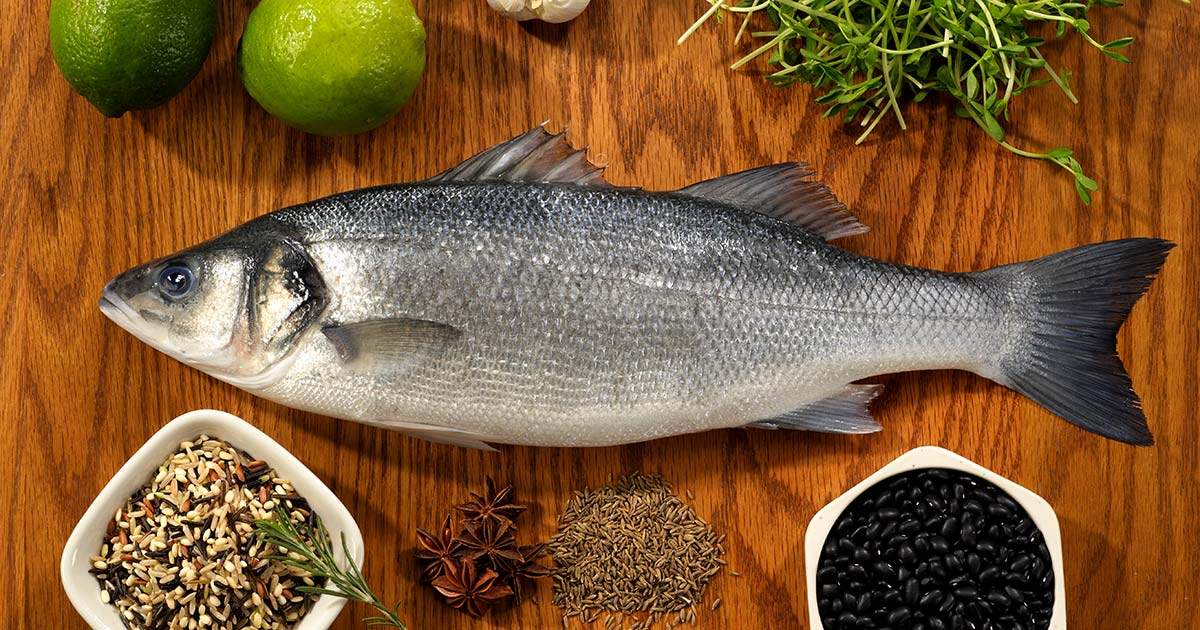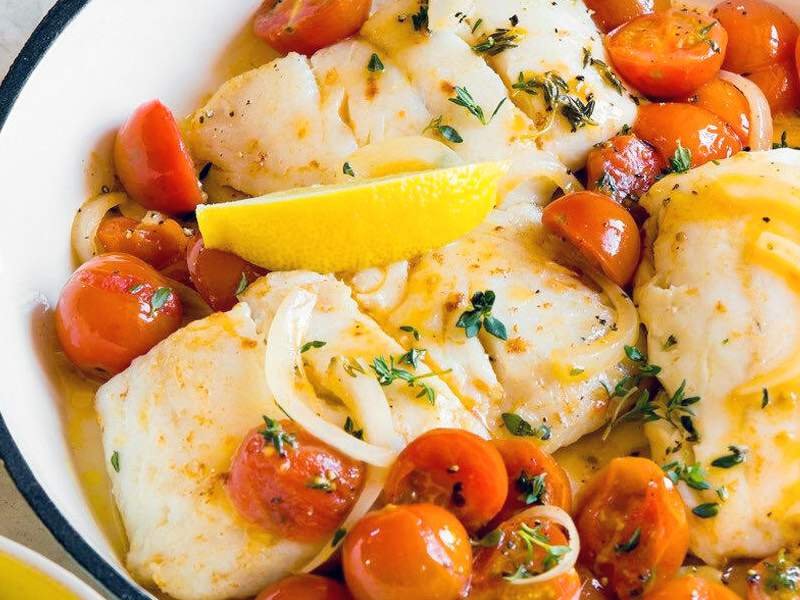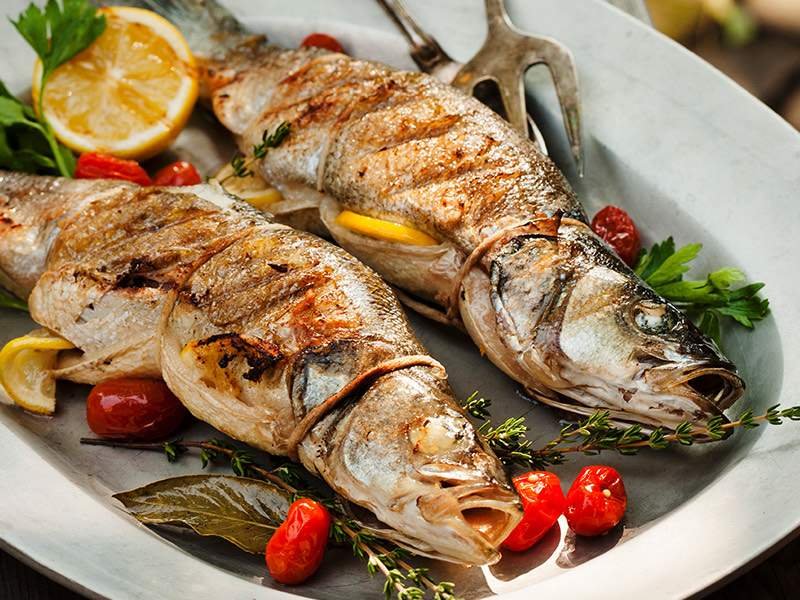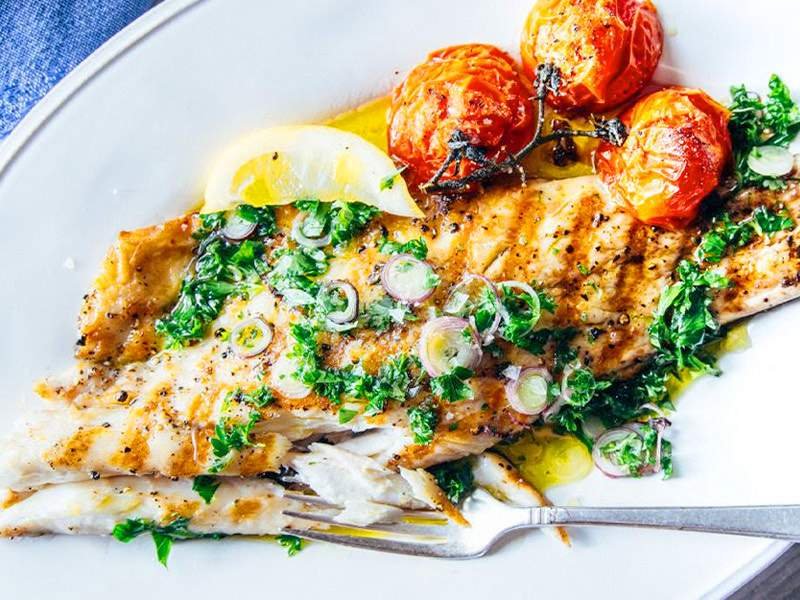Your Essential Guide to Bass

Bass are among the most varied and delicious fish in the world, including some marine and freshwater species. Some fish that are known as bass are not even technically bass, but we will get to that later. Spend some time with Robert DiGregorgio, FultonFishMarket.com’s Head of Quality Control, as he talks all about that bass - including some of the things that distinguish one bass species from the next, where they’re from, what each tastes like, what they look like as well as other points so as customers you can make more informed choices.
Different Types of Bass Fish
What is Branzino?
Let’s begin with the popular Branzino (Dicentrarchus labrax) also known as European Sea Bass. This is a fish long known to the Mediterranean people. In fact, in one mosaic found in the ruins of Pompeii, among other depictions of fish and sea life, is a very fine rendition of a branzino. In America, branzino is a newcomer to the seafood game. Years ago you could never find a branzino in the Fulton Fish Market. The old-timers that were winding up their careers when I started had never seen or even heard of a branzino. It didn’t start to become popular until the 1990s. In 2018 alone, more than 18 million pounds of branzino were imported into the U.S. That’s a pretty impressive gain in less than 30 years, so the question is; what is branzino and why is it so popular?
Branzino is naturally found in the wild from Norway to Senegal and throughout the Mediterranean and the Black Sea. It has become the most important fish in aquaculture in the Mediterranean, and these days Greece, Turkey, Italy, and Spain, among others, all have branzino aquaculture programs.
What Does Branzino Taste Like?
Branzino's popularity is well deserved. Branzino is a mild, white fish with a sweet, delicate flavor. This fish is highly regarded by professional chefs for its sweet, flaky meat and versatility. Of course, it's great taste and texture have a lot to do with its phenomenal success, but there are other factors as well, including health benefits. Branzino is a low calorie fish that is high in Omega 3 fatty acids, high in protein and a good source of the antioxidant selenium.
Why is Branzino So Popular?
Besides the fact that branzino tastes great, the advances and improvements in air freight have made branzino and other fish accessible to Americans. Also, as a farmed fish, the availability is much steadier and not subject to the whims of Mother Nature. This is a huge plus for chefs.
Chefs and restaurants like branzino because it’s a pan size fish. They can easily offer whole branzino, whereas before they could only offer a handful of fish that way, such as red snapper or black sea bass. The problem with those fish is that they are unavailable at times, even from one day to the next; and the prices can fluctuate greatly depending on supply and demand, making it difficult to include them as menu items. With branzino, the price is steady, supply is steady, and the size is constant. In short, it’s a very business-friendly fish.
Is Branzino Sustainable?
Our branzino is farmed and harvested in the Mediterranean Sea, but branzino aquaculture is now being developed here in the U.S. RAS systems (recirculating aquaculture system) avoid many of the challenges of ocean fish farming, such as pollution and hard to control water temperature, and so these fish can be raised miles from the ocean. It’s still a work in progress, however, as there are concerns about the amount of water and energy necessary to run a RAS operation, but I’m confident these challenges will be overcome in the near future.
What is a Striped Bass?
Striped Bass (Morone saxatilis) commonly called “stripers” or “rock”, are sharp-looking fish with blackish horizontal stripes from their head to their tails. They have an expansive natural range, from the St. Lawrence River to the Gulf of Mexico. Striped bass are anadromous like salmon and can grow up to 5ft. in length and up to 77lbs. This species of bass is usually caught between 5 and 20lbs, however, it is not uncommon to catch a 50lb fish.
Fun fact: The world record striped bass weighed in at an astonishing 125lbs!
What Does Striped Bass Taste Like?
Striped bass has a white, flaky, meaty texture and with enough fat to keep it moist even without butter. It’s dense and rich, yet delicate at the same time. It has a darker muscle, the “bloodline,” which can be easily separated if one doesn’t like a stronger flavor. The overall taste is almost sweet as well as briny, with a silky butteriness to it. It’s not only a tasty fish, but it’s also good for you. Striped bass is a great source of B12, iron and selenium, as well as being low in fat and high in Omega 3s.
Striped bass was, and continues to be, one of the most sought-after fish on the East Coast. The great James Beard himself proclaimed striped bass to be one of the top two or three best-eating fish in the world.
Fun fact: In 1957, when Queen Elizabeth and Prince Philip visited NYC and stayed at the famed Waldorf-Astoria Hotel, an “American meal” was requested. An impressive 4,500lbs of fresh striped bass were prepared for the feast. Her Majesty proclaimed the meal a culinary masterpiece!
Is Striped Bass Sustainable?
By the 1980s, overfishing, pollution, and the construction of dams that made spawning grounds inaccessible all contributed to driving the striped bass populations to dangerously low levels. A massive conservation effort calling on the cooperation of all states affected was necessary if the striped bass species was to be saved. Fortunately, these unprecedented efforts, extremely difficult in scope and purpose, resulted in one of the great sustainability success stories of our time. By 2007, the striped bass population rebounded to levels considered to be sustainable.
Today, the fishery is highly regulated and under strict control to prevent further exploitation. We’re not there yet, but with the continuing support of state and federal regulations, we may one day be able to restore the striped bass completely and lift the restrictions altogether.
What is Chilean Sea Bass?
Chilean Sea Bass (Dissostichus eleginoides), while technically known as Patagonian Toothfish, is actually not a true bass at all. In 1977, the name “Chilean Sea Bass” was invented by an American fish wholesaler, Lee Lantz, who was in Chile looking for something new and different. He “discovered” this new fish, well, new to Americans anyway. Lantz tried it, liked it, and knew he could sell it, but what would he call it? Patagonian toothfish? Umm, no. He kicked around some names and decided on the now famous Chilean Sea Bass.
Here is another fish that 30 years ago practically nobody ever heard of. I remember seeing it when it first started to come into the Fulton Fish Market in the 1980s, standing around with a few of the guys, and saying “Ok. What is it? And how do we sell it?”
What Does Chilean Sea Bass Taste Like?
Chilean sea bass has a smooth, buttery flavor and snow white flaky meat that can be cooked just about every way you can think of. It has high amounts of vitamin D, is a rich source of protein, and is high in Omega 3 fatty acids. Their high oil content makes them difficult to overcook.
Is Chilean Sea Bass Sustainable?
By 2002, a mere 25 years after being “discovered,” and only 10 years or so of being popular, environmental groups began to recommend chefs remove Chilean sea bass from their menus. The problem wasn't solely that it was being “legally” overfished, but that illegal fishing pirates accounted for 2/3 of the total catch, to the tune of tens of millions of pounds a year. This was too much for nature to bear and the fishery was on the verge of collapse.
Chilean sea bass mature very slowly and don’t spawn until around 10 years old. Much of the fish being caught never had the chance to reproduce and replace themselves. Thankfully, in 2002, COLTO (Coalition of Legal Toothfish Operators) was formed to eliminate illegal fishing of toothfish and to promote sustainable toothfish fisheries. COLTO is a coalition of toothfish fishing nations comprising 12 countries and their territories including Argentina, Chile, Australia, South Africa, and others, with 50 members all together accounting for 85% of the world’s Chilean Sea Bass catch. By 2010, several of the fisheries had become MSC certified and in 2016 the last large pirate fishing vessel was captured and destroyed with no loss of life. By 2017, well over half of the world’s Chilean sea bass catch was MSC certified.
From obscurity to near extinction to well-managed fisheries in only 40 years. A colossal achievement for this beloved fish!
What is Black Sea Bass?
Black Sea Bass (Centropristis striata) are found in very deep Atlantic waters from Maine to Florida, sometimes at depths of 1,100 feet or more. This species of bass feed primarily on shrimp, crabs and clams. I’ve always considered this a very pretty fish. The blue/black color of the black sea bass is highlighted by a greenish bluish iridescence.
Fun fact: One of the more interesting things about this fish is that most of them start life as females. As they mature, usually around 2-5 years, some become males. Science is not entirely sure why this occurs, but perhaps it is to compensate for a shortage of males in the breeding group.
What Does Black Sea Bass Taste Like?
Black sea bass has pure white flesh that is very rich with a sweet, buttery flavor. Many chefs, including Jasper White, a recognized seafood expert, believe the black sea bass has few rivals in this part of the world.
Is Black Sea Bass Sustainable?
Black sea bass is considered by experts to be a “Smart Seafood Choice”, sustainably managed and responsibly harvested under US regulations. Fishing status are at recommended levels, fishing gear have minimal impact on the marine environment, and regulations are in place to minimize bycatch. According to the 2019 Stock Assessments, black sea bass are not overfished and are not subject to overfishing.
Our Favorite Bass Recipes
Pan Roasted Black Sea Bass with Burst Tomatoes Recipe
Tender, mild and sweet black sea bass is one of our favorite summer fish. It's super versatile, from grilling whole, to roasting, poaching or steaming. For a quick midweek meal, we love to pan roast it with sweet summer tomatoes, thyme and onions. Healthy, delicious and ready in 10 minutes!
Grilled Stuffed Branzino Recipe
Having friends over for dinner? Impress them with our whole grilled stuffed Branzino recipe and take your table straight to the Mediterranean. Perfect to share and easy to prepare. So do as the Greeks do and enjoy this meal with a simple salad, crusty bread, and some good wine!
Our miso Chilean sea bass recipe is a riff on Nobu's miso black cod recipe, one of those famous fish dishes that looks impressive, but is actually much easier to make than you might think. Nobu's signature dish marinates fish in sweet-savory sake and miso for two to three days, but we've reduced it to an overnight marinade which still gets you all that incredible flavor.
Roasted Striped Bass with Blistered Tomatoes & Chimichurri Recipe
This quick and delicious striped bass recipe is ready in under 10 minutes and has a nice smoky flavor from the grill that is cut by the freshness and acidity of the chimichurri. Chimichurri is versatile South American green herb sauce that is delicious alongside all types of seafood. Luckily our recipe makes extra, so store in the fridge for a week.




